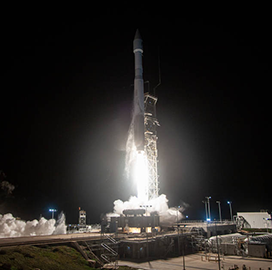A National Oceanic and Atmospheric Administration polar-orbiting weather satellite and a demonstration of NASA’s heat shield technology took off Thursday aboard a United Launch Alliance-built Atlas V rocket from Vandenberg Space Force Base in California.
NOAA’s Joint Polar Satellite System 2 will be called NOAA-21 once it reaches its final orbit and will join the Suomi National Polar-orbiting Partnership and NOAA-20 satellites in providing forecasters data to help track climate change and predict extreme weather events as they move around the globe 14 times each day, NASA said Thursday.
According to the space agency, JPSS-2 will begin gathering data a month after liftoff.
After the deployment of the JPSS-2 satellite, NASA’s Low-Earth Orbit Flight Test of an Inflatable Decelerator, also known as LOFTID, autonomously inflated and splashed down off the coast of Hawaii after its re-entry into the Earth’s atmosphere just over two hours after liftoff.
The space agency said the inflatable LOFTID heat shield, also known as aeroshell, could someday help land payloads on Mars and other planets and return samples and other components to Earth.
A team of researchers will evaluate data from the LOFTID tech demo to assess the performance of the heat shield.





